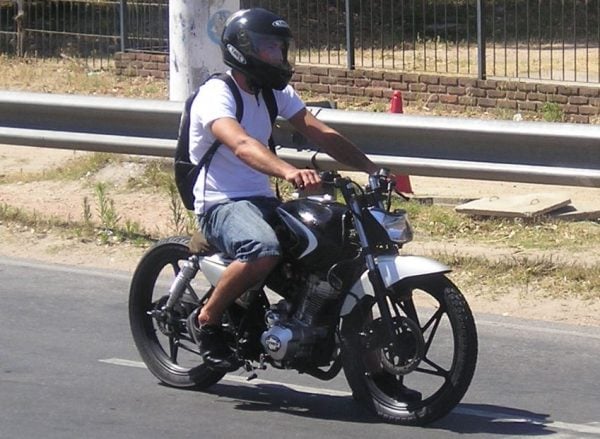Skin versus the road is a argument the road will always win, but it doesn’t stop motorcyclists from riding around in summer wearing shorts, a t-shirt and jandals. Unfortunately summer is the time you really want to be outside on your bike, feeling the breeze against your skin. What should you do?
We could say search Google for images of what happens when skin is dragged along tarmac at speed, but you’ll need a strong stomach. This is why conscientious motorbike riders wear proper safety gear. Protective clothing for motorbikes means boots, jacket, trousers, gloves and (if you value your spine) a back protector. The problem is that when it’s 30 degrees (yes, that’s you, Napier and Ashburton) it’s extremely uncomfortable when you have to come to a stop because there’s no airflow to keep you cool.
Fortunately there are ways to keep cool.
Summer motorbike clothing
If you’re a hard core biker and use your bike for commuting, you’ll probably already have invested in gear for riding your motorbike in wet weather. The same concept applies: purchase protective clothing the suits the riding conditions. Lighter weight summer protective clothing is sometimes cheaper than the heavier winter clothing, but you’ll need to look out for specific features such as vents that can be opened and closed easily, and textiles that breath.
Of course, you could use your summer gear in winter – winters in much of the North Island are mild, so a couple of extra layers underneath and you’re set, and you perhaps don’t need to buy heavier winter gear. Get some advice from other riders and bike shops.

This rider is risking serious injury and permanent scarring by not wearing the right safety equipment, even though it’s hot
Ventilation
Open all the vents you have in your jacket, pants and helmet to allow the high velocity wind to enter and cool you using convection. Convection-based cooling works up until the air temperature is around 34C, which means almost every day in New Zealand. Above 34C, though, wind temperature will heat up your body therefore you’ll need wind-deflecting material with breathable material underneath.
Moisture and cooling
There are specialist cooling vests which you can fill with water to help cool you down. These work by evaporation. An alternative is to soak your t-shirt in cold water and put your jacket on over the top. The t-shirt will evaporate its water first to keep you cool, and this will also stop you sweating so much which will reduce the chances of dehydration.
Sunscreen
Even though you’ll be wearing gear, there may be areas of your body that are exposed such as your neck and wrists, and your face if you are wearing an open face helmet (which we don’t think is wise seeing as you’ll damage your face in an accident).
Heat generated by your bike
Naked bikes tend to project their heat at the rider, particularly at slow speeds, so if you don’t want to feel like you’re sitting astride a 3-bar heater, try filtering through traffic to keep the air flow (if it’s safe), or taking a longer route that has better traffic flow.
Taking breaks
It’s really important that you take breaks in the shade, off your bike, and ensure that you are hydrated. You should be drinking something at least every hour. As soon as you feel thirsty you are already slightly dehydrated. If it’s really hot you’ll need at least half a litre of water per hour at minimum, and more like 1-1.2 litres per hour. Dehydration causes bad riding, but you won’t realise it until it’s too late. You can use a hydration pack/water bladder. Don’t drink icy water from this as your body tries to heat it up which actually makes you hotter. You can judge your hydration levels by your urine levels: if it’s clear, you’re well-hydrated; if it’s yellow then you’re not.
If you feel sick or dizzy, or you get cramps, a headache or blurry vision these are early signs of heatstroke and electrolyte loss. You must stop and take a break for at least half an hour and both eat and drink something (preferably something healthy).

